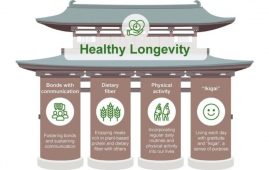

The World Health Organization (WHO) today announced the addition of noma (cancrum oris or gangrenous stomatitis) in its official list of neglected tropical diseases (NTDs), a critical step toward tackling one of the world’s most underrecognized health concerns. The 17th meeting of the Strategic and Technical Advisory Group for Neglected Tropical Diseases (STAG-NTD) approved this decision, which shows WHO’s commitment to expanding health care to the world’s most vulnerable populations.
Noma, a severe gangrenous disease of the lips and face, typically affects malnourished young children (aged 2 to 6 years) in impoverished areas. It begins as gum irritation and develops swiftly to destroy facial tissues and bones if not treated early. It frequently results in death, leaving survivors with serious disfigurement.
Accurate assessment of the number of noma cases is difficult due to the disease’s rapid progression and associated stigma, which contributes to many instances going misdiagnosed. Noma is predominantly common in Sub-Saharan Africa, but it has also been reported in the Americas and Asia.
Noma appears to be caused by bacteria present in the mouth, according to evidence. This condition is connected with several risk factors, including poor dental hygiene, malnutrition, impaired immune systems, infections, and extreme poverty. Noma is not communicable, although it prefers to attack when the body’s defenses are weak.
Early identification is critical since medication is most successful when the disease causes severe swollen gums, a condition known as acute necrotizing gingivitis. Antibiotics are utilized in treatment, as well as advice and support on how to enhance oral hygiene with disinfectant mouthwash (salt water or chlorhexidine can be used) and nutritional supplements. If the condition is detected early on, treatment can result in good wound healing with no long-term complications. Surgery, on the other hand, may be required in extreme situations. Children who survive the gangrenous stage of the disease are at risk of severe facial deformities, difficulties eating and speaking, social shame and isolation, and reconstructive surgery.
“Noma is more than a disease, it is a social marker of extreme poverty and malnutrition, affecting the most vulnerable populations,” said Dr Tedros Adhanom Ghebreyesus, WHO Director-General. “By classifying noma as a neglected tropical disease, we are shining a light on a condition that has afflicted marginalized communities for centuries. We are committed to working with affected countries and communities to address the drivers of noma, and alleviate the suffering it causes.”
The designation of noma as a non-communicable disease (NTD) intends to raise worldwide awareness, catalyze research, stimulate funding, and boost efforts to control the condition through multisectoral and multi-pronged approaches. Interventions addressing the burden of this deadly disease will help achieve universal health care by explicitly targeting pockets of underserved communities.
Noma is frequently managed by oral health programs in endemic areas, and operational coordination with NTD programs can be increased, particularly by incorporating noma into efforts targeted at detecting and managing skin-related neglected tropical illnesses (skin NTDs).
The Nigerian government initiated the effort to include noma in the list of NTDs. An official request was made to WHO on behalf of 32 Member States in January 2023. The request was accompanied by a detailed dossier showing the burden and distribution of noma and presenting information to verify compliance with WHO’s requirements. Several partner institutions helped by providing information and advocating.
The formal process for adding new conditions to the NTD list was established by the STAG-NTD in 2016. Since then, the following diseases have been added: mycetoma (2016); chromoblastomycosis and other deep mycoses (2017; merged in a single group with mycetoma); scabies (2017); snakebite envenoming (2017); and noma (2023). Currently, with noma, WHO’s NTD list includes 21 diseases or groups of diseases.
Source: World Health Organization
more recommended stories
 Perinatal Mental Health Challenges Highlighted in New Study
Perinatal Mental Health Challenges Highlighted in New StudyMental Health Challenges in New Parents:.
 World Summit Outlines Core Principles for Healthy Longevity
World Summit Outlines Core Principles for Healthy LongevityWhy Healthy Longevity Demands a New.
 Cholesterol-Lowering Drugs May Help Reduce PFAS Levels
Cholesterol-Lowering Drugs May Help Reduce PFAS LevelsPer- and polyfluoroalkyl substances (PFAS) continue.
 AI ECG Model Outperforms Standard STEMI Triage
AI ECG Model Outperforms Standard STEMI TriageNovel AI ECG Model Outperforms Standard.
 WHO and EU Strengthen Digital Health in Africa
WHO and EU Strengthen Digital Health in AfricaThe World Health Organization (WHO) and.
 Quitting Smoking Slows Memory Decline, Study Finds
Quitting Smoking Slows Memory Decline, Study FindsQuitting smoking is linked to slower.
 Breakfast Skipping Linked to Metabolic Syndrome
Breakfast Skipping Linked to Metabolic SyndromeBreakfast Skippers May Face Metabolic Consequences.
 Cancer Cells Learn to Self-Report: A New Frontier in Immunotherapy
Cancer Cells Learn to Self-Report: A New Frontier in ImmunotherapyHow a Drug Complex Enables Immune.
 Machine Learning Predicts Early Mortality in IBD Patients
Machine Learning Predicts Early Mortality in IBD PatientsA groundbreaking study published in the.
 BRP Peptide for Weight Loss: A Natural Alternative to Ozempic?
BRP Peptide for Weight Loss: A Natural Alternative to Ozempic?The rising obesity epidemic has fueled.

Leave a Comment